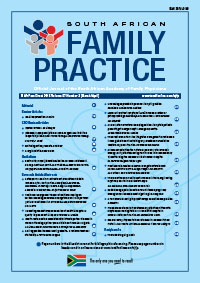Socio-demographic risk factors for unintended pregnancy among unmarried adolescent Nigerian girls
Keywords:
adolescent pregnancy, age and household headship, Nigeria, sex
Abstract
Background: Globally, unintended births among unmarried adolescent girls are a major contributor to maternal and childhood mortality, the vicious cycle of ill-health, poverty, and truncated educational opportunities. Nigeria has the highest rates of adolescent fertility in sub-Saharan Africa. Over 900 000 births to adolescents occur annually and 150 out of every 1000 women who give birth in Nigeria are 19 years old or under. Objective: To document and investigate socio-demographic risk factors for unintended pregnancy among unmarried adolescent Nigerian girls. Methods: Data for this study were drawn from the 2008 Nigeria Demographic and Health Survey. Univariate and multivariate statistical analyses were used to assess the relationship between adolescent pregnancy and socio-demographic contextual lfactors focusing on sex and age of household head, adolescent girls’ age, and educational attainment, place of residence, religious affiliation, and household wealth index. All data were analysed using STATA Version 11. Results: Non-pregnant adolescents had older household heads; such households were wealthy, and parents of such households had higher educational standing. Female-headed households were less likely to experience unwanted adolescent pregnancy compared to those of the reference group category (OR = 0.56, 95% CI = 0.3920–0.8073). Conclusion: There is a significant relationship between age and sex of household head and risk of unintended adolescent pregnancy among unmarried adolescent girls. Adolescent girls from households headed by young adults are more likely to experience adolescent pregnancy compared to adolescent girls from households headed by older adults. (Full text available online at www.medpharm.tandfonline.com/ojfp) S Afr Fam Pract 2015; DOI: 10.1080/20786190.2014.977042
Published
2015-05-19
Section
Research Articles
By submitting manuscripts to SAFP, authors of original articles are assigning copyright to the South African Academy of Family Physicians. Copyright of review articles are assigned to the Publisher, Medpharm Publications (Pty) Ltd, unless otherwise specified. Authors may use their own work after publication without written permission, provided they acknowledge the original source. Individuals and academic institutions may freely copy and distribute articles published in SAFP for educational and research purposes without obtaining permission.

